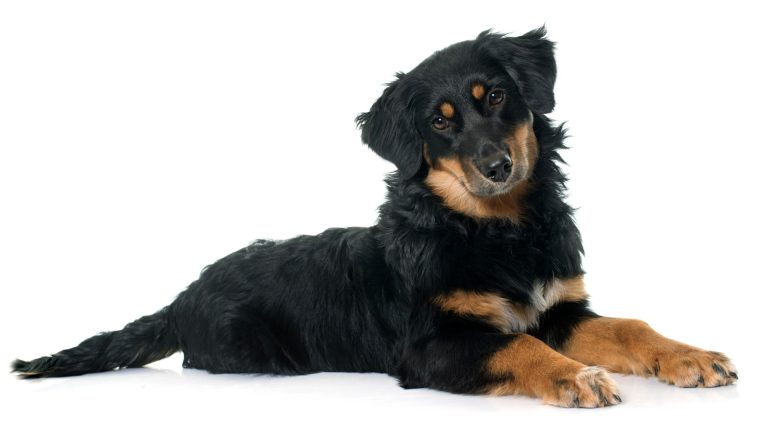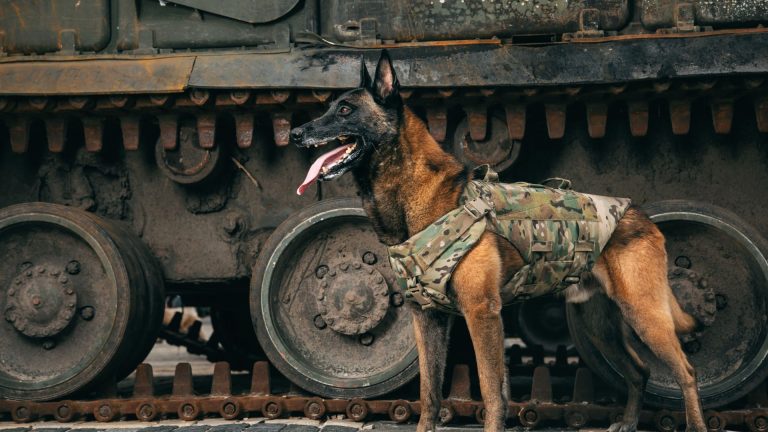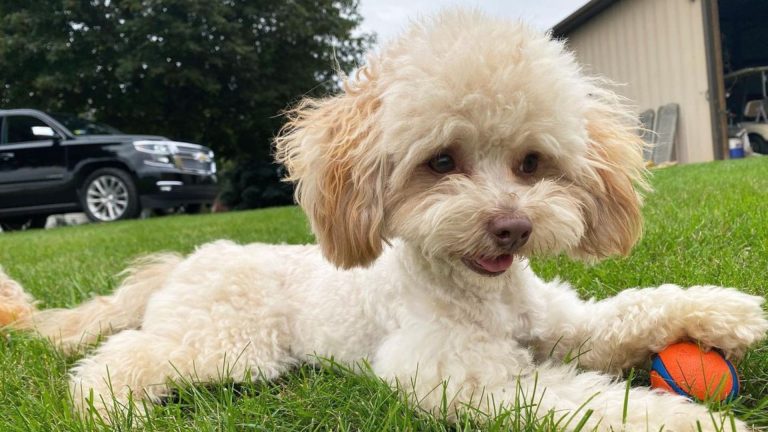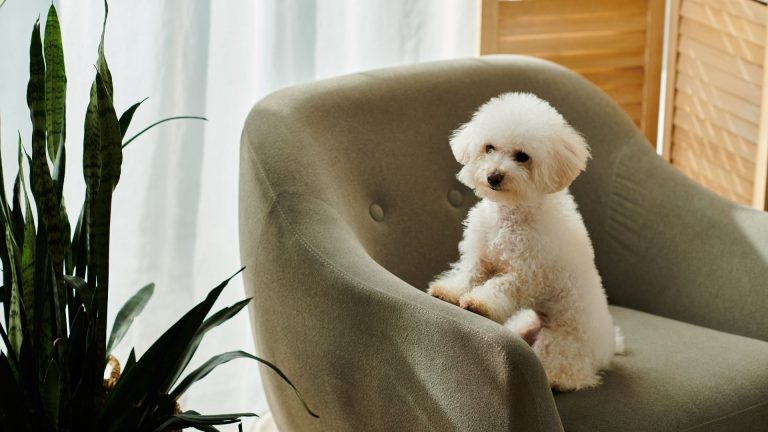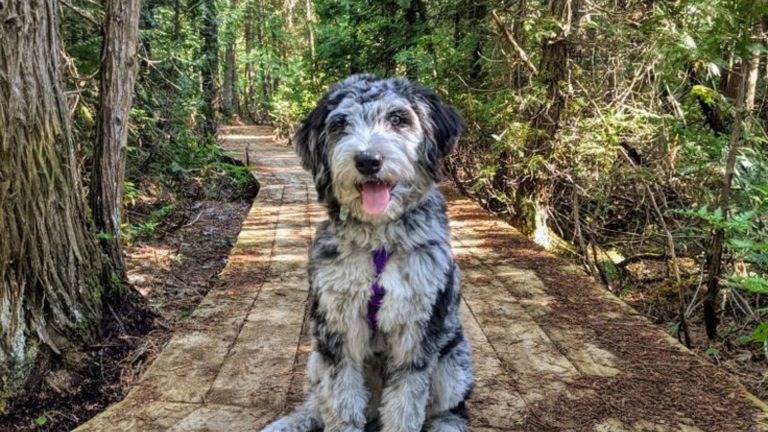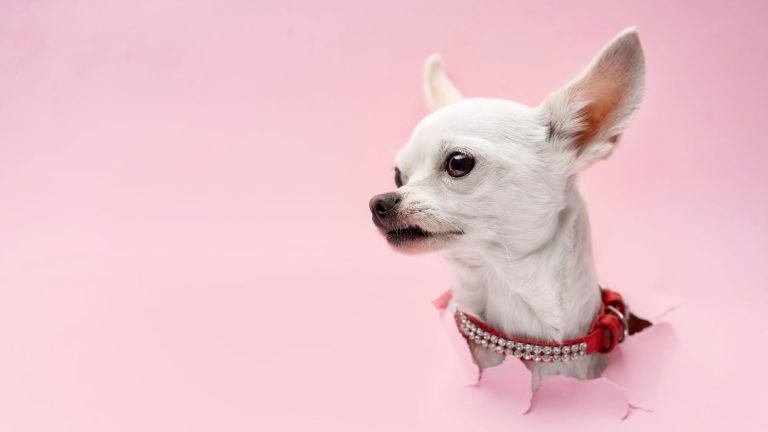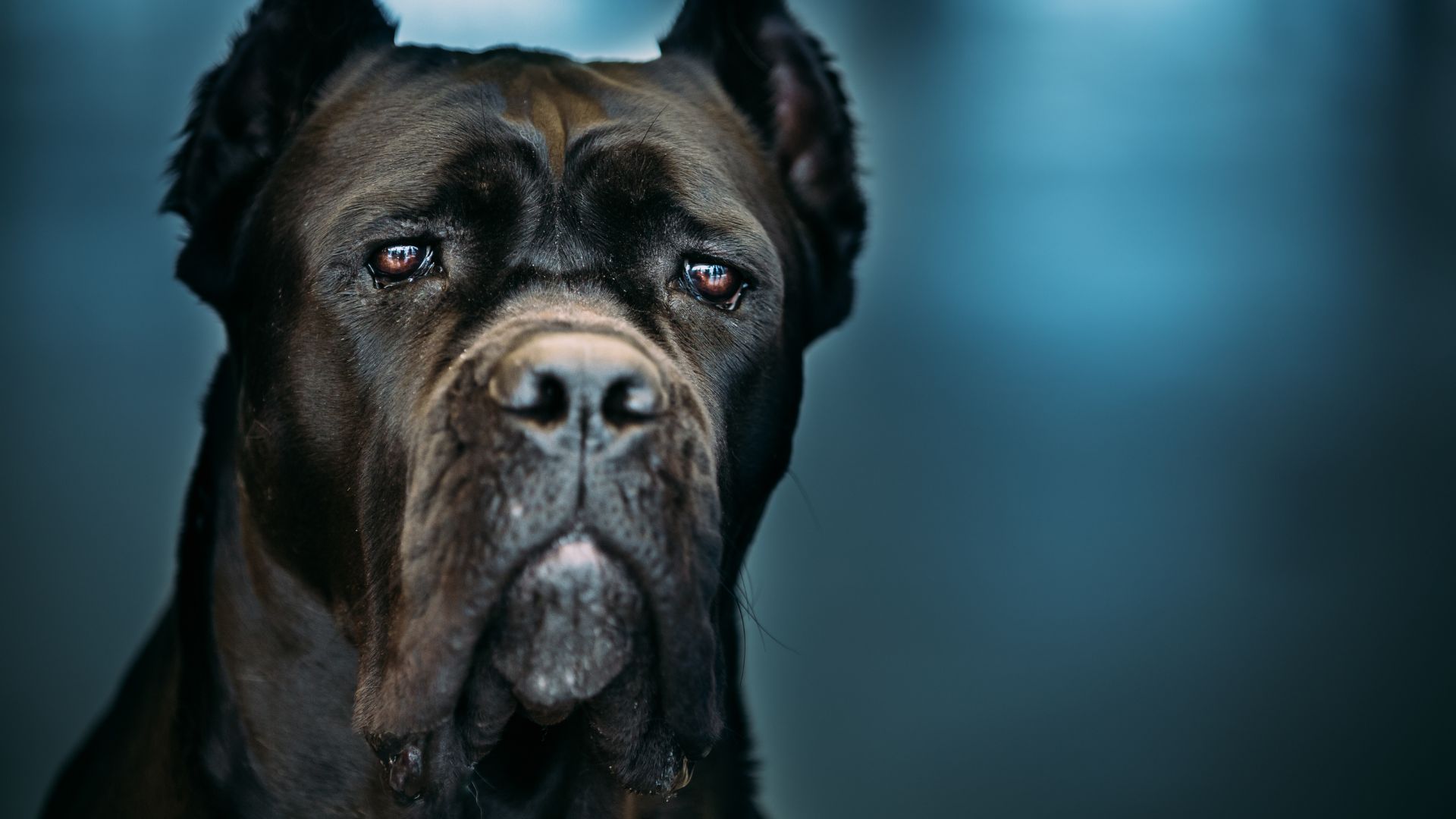
Contents
There’s a certain allure to owning a big, intimidating dog for protection. These powerful animals not only offer a sense of security but also become loyal companions. In this article, we’ll explore the top seven big scary dog breeds known for their protective instincts. Each breed has unique traits that make them excellent guardians.
We’ll dive into the history, characteristics, and training tips for each breed. Understanding these aspects is crucial for prospective owners. Not every large dog suits every household. Some breeds require experienced handlers, while others fit well with families. Choosing the right dog ensures safety and harmony at home.
Our list includes Rottweilers, German Shepherds, Bullmastiffs, Doberman Pinschers, Cane Corsos, Great Danes, and American Pit Bull Terriers. Each breed has proven its worth as a protector. But, their effectiveness depends on proper training and socialization. We’ll also discuss the daily care needs and challenges of living with these imposing dogs. By the end of this article, you’ll have a comprehensive understanding of which breed might be the best fit for your protection needs.
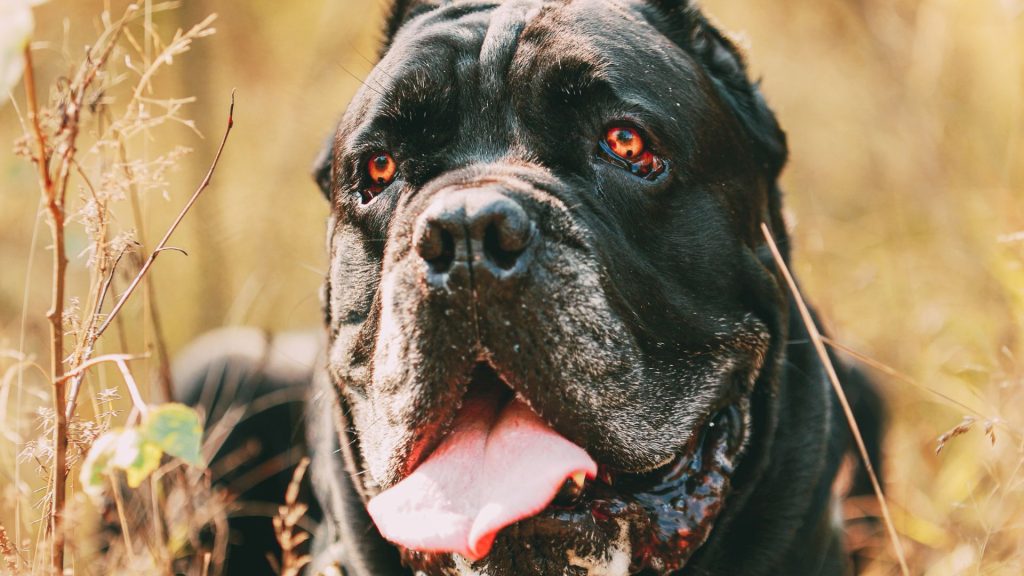
Understanding the Role of Guard Dogs
Guard dogs play a crucial role in home and property protection. Their primary purpose is to deter intruders and protect their owners. These dogs are naturally vigilant and possess a strong protective instinct. They often act as a first line of defense, providing both a visual and audible deterrent to potential threats.
The history of guard dogs dates back thousands of years. Ancient civilizations used dogs to guard their homes, livestock, and valuables. For example, Romans employed Mastiffs to protect estates and fight alongside soldiers. In medieval times, castles and manors relied on guard dogs for security. This long history underscores the effectiveness of these animals in safeguarding humans and their property.
Certain characteristics make a breed ideal for protection. First, a guard dog must be large and imposing. This physical presence alone can deter intruders. Second, they need a strong territorial instinct. Guard dogs must feel a sense of ownership over their home and family. Third, they should be trainable and obedient. Proper training ensures they act appropriately in different situations. Lastly, loyalty is key. A good guard dog must bond closely with its family, willing to protect them at all costs.
Top 7 Big Scary Dog Breeds for Ultimate Protection
In this section, we’ll delve into the top seven big, intimidating dog breeds that excel in protection. Each breed offers unique traits and skills, making them exceptional guardians for your home and family.
#1. Rottweiler
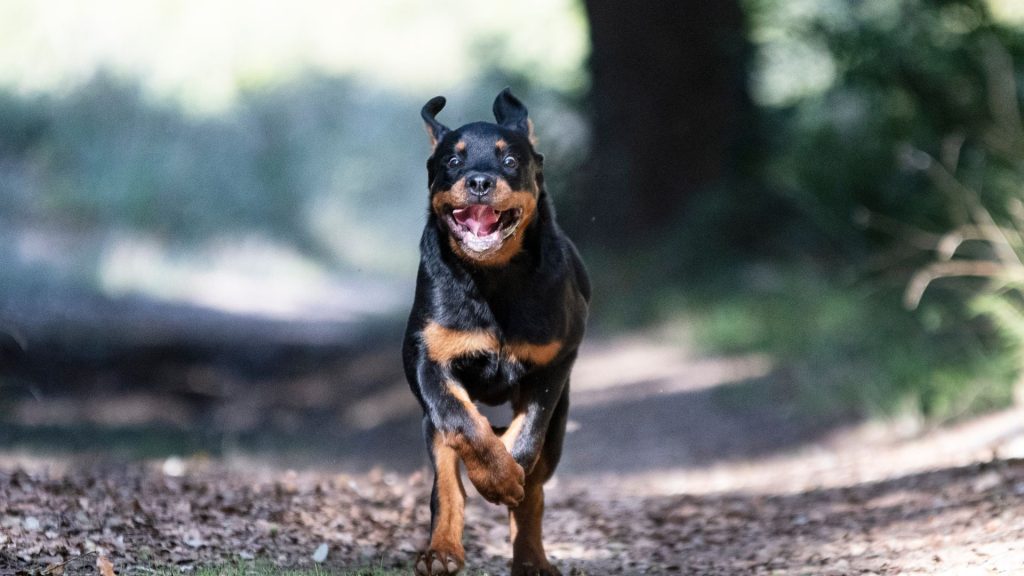
The Rottweiler has a rich history dating back to the Roman Empire. These dogs were used to herd livestock and guard the camps. As the Romans traveled, they left behind dogs in the town of Rottweil, Germany, where the breed got its name. Over time, Rottweilers evolved into versatile working dogs, valued for their strength and loyalty.
Physical Characteristics
Rottweilers are large, muscular dogs with a robust build. They typically weigh between 80 to 135 pounds and stand about 22 to 27 inches tall at the shoulder. Their short, dense coat is black with distinct rust-colored markings on their face, chest, and legs. Their powerful appearance adds to their intimidating presence.
Temperament and Protective Instincts
Rottweilers are known for their calm, confident demeanor. They are naturally protective and have a strong guarding instinct. Loyal and fearless, they form strong bonds with their families and are particularly protective of children. However, they can be reserved with strangers, making them excellent watchdogs. Proper socialization is essential to prevent over-guarding behaviors.
Training Tips and Suitability for Families
Training a Rottweiler requires consistency and a firm but loving approach. Early socialization and obedience training are crucial to ensure they become well-mannered adults. Rottweilers thrive in active households where they can participate in various activities. They need regular exercise and mental stimulation to stay happy and healthy. With proper training and care, Rottweilers make excellent family pets and loyal protectors.
#2 German Shepherd
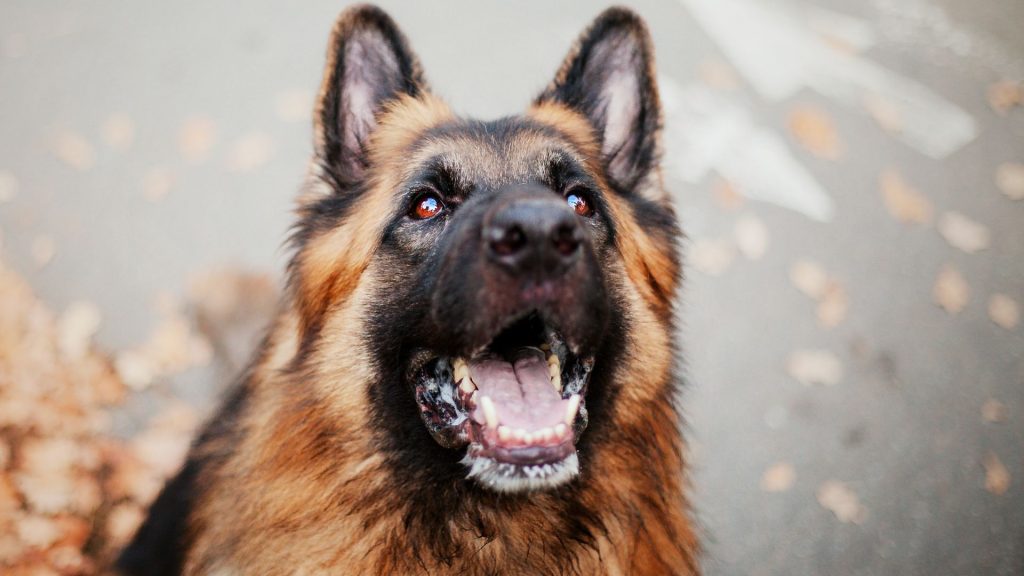
The German Shepherd originated in Germany in the late 19th century. Captain Max von Stephanitz developed the breed by selecting dogs with strong working abilities. Initially used for herding sheep, German Shepherds quickly became popular for their intelligence, versatility, and trainability. Today, they are renowned for their roles in police and military work, search and rescue, and as service dogs.
Physical Characteristics
German Shepherds are medium to large-sized dogs, typically weighing between 50 to 90 pounds. They stand about 22 to 26 inches tall at the shoulder. Their double coat is dense and can be medium or long, commonly in black and tan, sable, or all-black. They have erect ears and bushy tails give them a distinctive, alert appearance. Their strong, athletic build makes them both powerful and agile.
Temperament and Protective Instincts
German Shepherds exhibit loyalty, courage, and confidence. They highly protect their families and naturally guard them. Their intelligence and eagerness to please make them highly trainable. Although they can act reserved with strangers, they generally show friendliness and affection toward their families. Proper socialization ensures they remain well-adjusted and balanced.
Training Tips and Suitability for Families
Training a German Shepherd requires consistency, patience, and positive reinforcement. Early socialization and obedience training are essential to harness their intelligence and energy. These dogs thrive in active households where they can engage in various activities, such as agility, tracking, or obedience competitions. Regular exercise and mental stimulation are vital to keep them happy and healthy. German Shepherds are well-suited for families who can provide the time and commitment they need to thrive.
#3 Bullmastiff
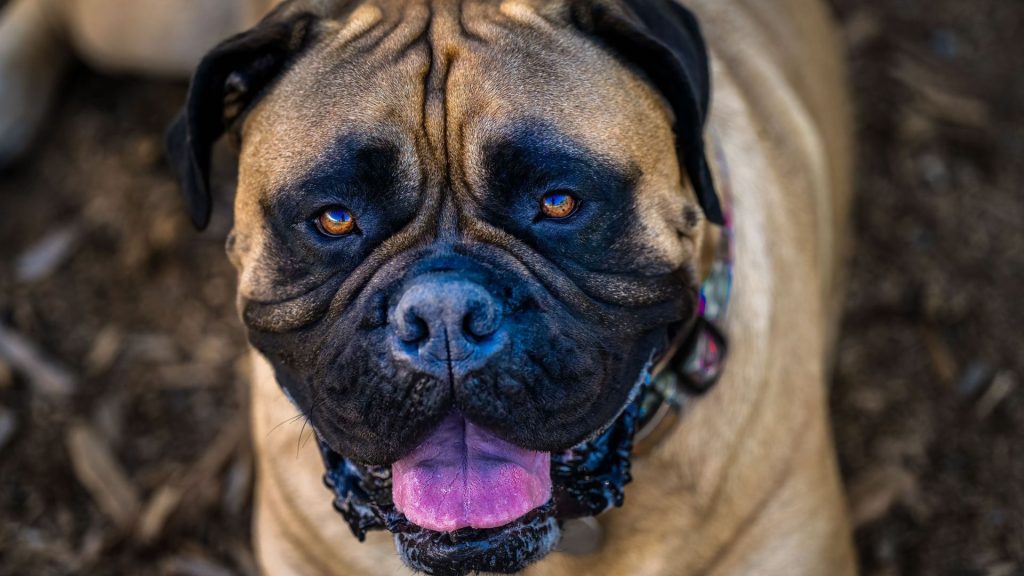
The Bullmastiff was developed in England in the mid-19th century. Gamekeepers needed a dog to guard estates and catch poachers. They crossed Bulldogs with Mastiffs to create a breed with the strength, speed, and bravery to protect large properties. Bullmastiffs quickly proved effective as guard dogs and gained popularity for their loyalty and protective nature.
Physical Characteristics
Bullmastiffs are large, muscular dogs with a powerful build. They typically weigh between 100 to 130 pounds and stand about 24 to 27 inches tall at the shoulder. Their short, dense coat can be fawn, red, or brindle. Bullmastiffs have a broad head with a wrinkled forehead and a short muzzle, giving them a distinctive and imposing appearance.
Temperament and Protective Instincts
Bullmastiffs are known for their loyal, courageous, and calm temperament. They are natural protectors with a strong guarding instinct. They bond closely with their families and are particularly good with children. While they can be aloof with strangers, they are gentle and affectionate with those they know. Their size and strength make them excellent deterrents to intruders.
Training Tips and Suitability for Families
Training a Bullmastiff requires patience, consistency, and a firm yet gentle approach. Early socialization and obedience training are essential to ensure they grow into well-behaved adults. Bullmastiffs need regular exercise to stay healthy, but they are generally less energetic than some other large breeds. They thrive in homes where they can be part of the family activities. Bullmastiffs are well-suited for families who can provide them with love, structure, and a secure environment.
#4 Doberman Pinscher
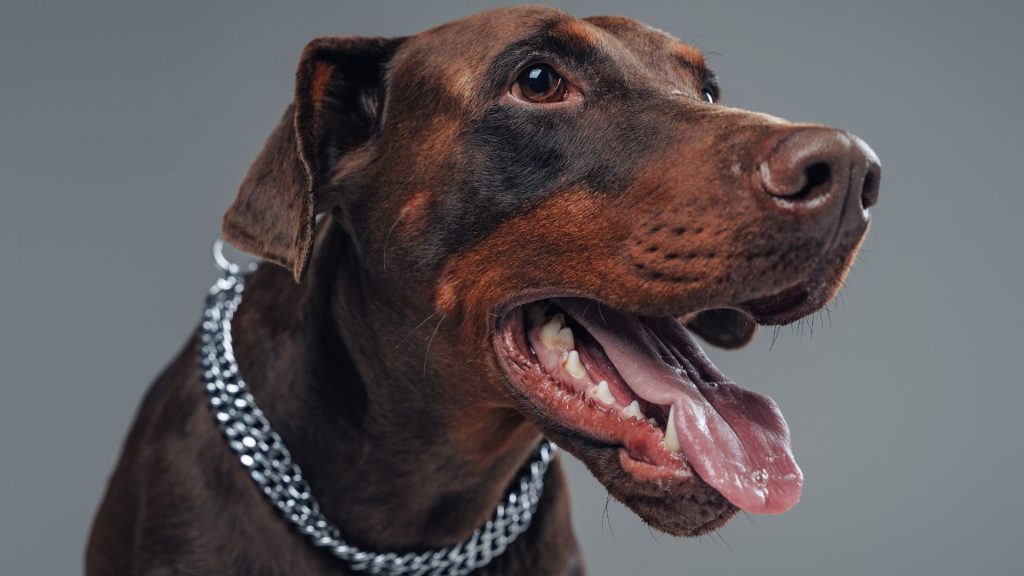
The Doberman Pinscher was developed in Germany in the late 19th century by Karl Friedrich Louis Dobermann. Dobermann, a tax collector, needed a loyal and protective companion to accompany him on his rounds. By selectively breeding dogs with guarding instincts, he created the Doberman Pinscher. This breed quickly gained a reputation for its intelligence, loyalty, and protective nature.
Physical Characteristics
Doberman Pinschers are medium to large-sized dogs, typically weighing between 60 to 100 pounds. They stand about 24 to 28 inches tall at the shoulder. They have a sleek, athletic build with a short, smooth coat that can be black, blue, red, or fawn, often with rust-colored markings. Their erect ears, docked tails, and proud stance give them a distinctive and noble appearance.
Temperament and Protective Instincts
Doberman Pinschers exhibit intelligence, loyalty, and alertness. They naturally protect and have a strong guarding instinct. They respond well to training and thrive on mental and physical challenges. Dobermans show affection to their families and can act reserved with strangers, making them excellent watchdogs. Their protective nature and loyalty make them ideal guardians.
Training Tips and Suitability for Families
Training a Doberman Pinscher requires consistency, patience, and positive reinforcement. Early socialization and obedience training are crucial to ensure they grow into well-adjusted adults. Dobermans need regular exercise and mental stimulation to stay happy and healthy. They excel in activities like agility, obedience, and tracking. These dogs thrive in active households and are well-suited for families who can provide the time and commitment needed to keep them engaged and well-behaved. With proper training and care, Doberman Pinschers make excellent family pets and loyal protectors.
#5 Cane Corso
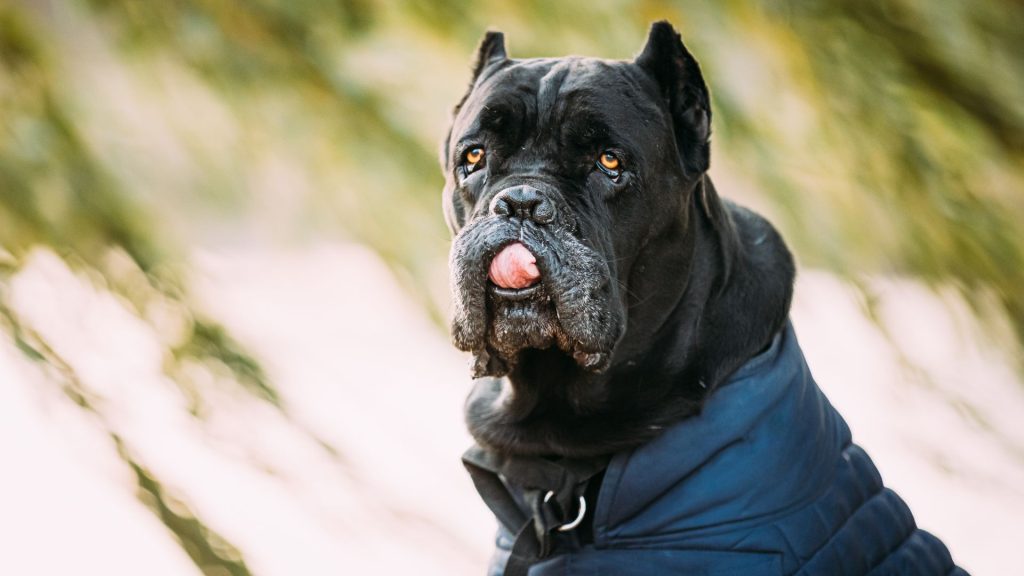
The Cane Corso is an ancient Italian breed, tracing its roots back to Roman times. These dogs were originally used as war dogs and later for guarding property, livestock, and families. The breed almost faced extinction but was revived in the mid-20th century by dedicated enthusiasts. Today, Cane Corsos are known for their loyalty, strength, and protective nature.
Physical Characteristics
Cane Corsos are large, muscular dogs with a powerful build. They typically weigh between 90 to 120 pounds and stand about 23.5 to 27.5 inches tall at the shoulder. Their short, dense coat can be black, gray, fawn, or red, often with a brindle pattern. They have a broad head, a strong jaw, and expressive eyes. Their imposing appearance and athletic build make them a formidable presence.
Temperament and Protective Instincts
Cane Corsos are known for their intelligence, loyalty, and protective instincts. They form strong bonds with their families and are particularly good with children. They are naturally wary of strangers and possess a strong guarding instinct. While they can be aloof with those they do not know, they are affectionate and gentle with their loved ones. Proper socialization is essential to prevent overly aggressive behavior.
Training Tips and Suitability for Families
Training a Cane Corso requires consistency, firmness, and a gentle hand. Early socialization and obedience training are crucial to ensure they develop into well-mannered adults. Cane Corsos need regular exercise and mental stimulation to stay healthy and happy. They thrive in homes where they can participate in various activities and enjoy the company of their family. With proper training and care, Cane Corsos make excellent family pets and reliable protectors. Families who can provide the time, dedication, and leadership needed will find a loyal and devoted companion in the Cane Corso.
#6 Great Dane
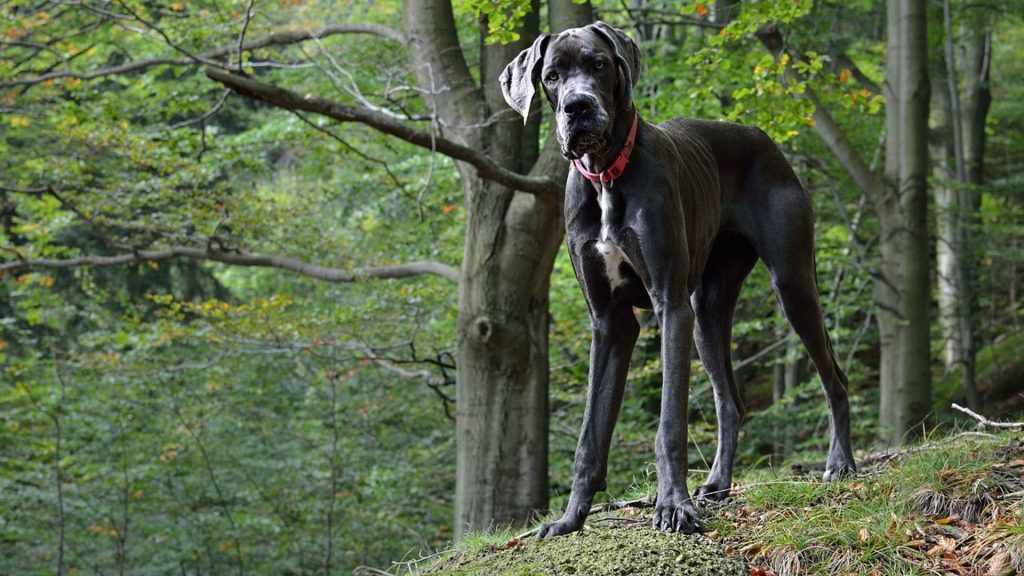
The Great Dane, also known as the “Apollo of Dogs,” originated in Germany. Bred for hunting wild boar and guarding estates, their history dates back over 400 years. Despite their intimidating size, Great Danes were also bred for their gentle disposition, making them both formidable protectors and loving companions.
Physical Characteristics
Great Danes are one of the largest dog breeds, standing 28 to 34 inches tall at the shoulder and weighing between 100 to 200 pounds. They have a sleek, muscular build with a short, smooth coat that comes in various colors, including fawn, brindle, blue, black, and harlequin. Their large, expressive eyes and dignified appearance contribute to their majestic presence.
Temperament and Protective Instincts
Great Danes are known for their gentle, friendly, and affectionate nature. They are loyal and protective of their families, often using their size to deter potential threats. Despite their imposing appearance, they are typically calm and reserved. Their protective instincts, combined with their friendly disposition, make them excellent family guardians.
Training Tips and Suitability for Families
Training a Great Dane requires patience, consistency, and positive reinforcement. Early socialization and obedience training are essential to ensure they become well-mannered adults. Great Danes need regular exercise to maintain their health, but they are generally not as high-energy as some other large breeds. They thrive in homes where they can be close to their families and enjoy plenty of attention. With proper training and care, Great Danes make wonderful family pets and loyal protectors, suited for those who can accommodate their size and needs.
#7 American Pit Bull Terrier
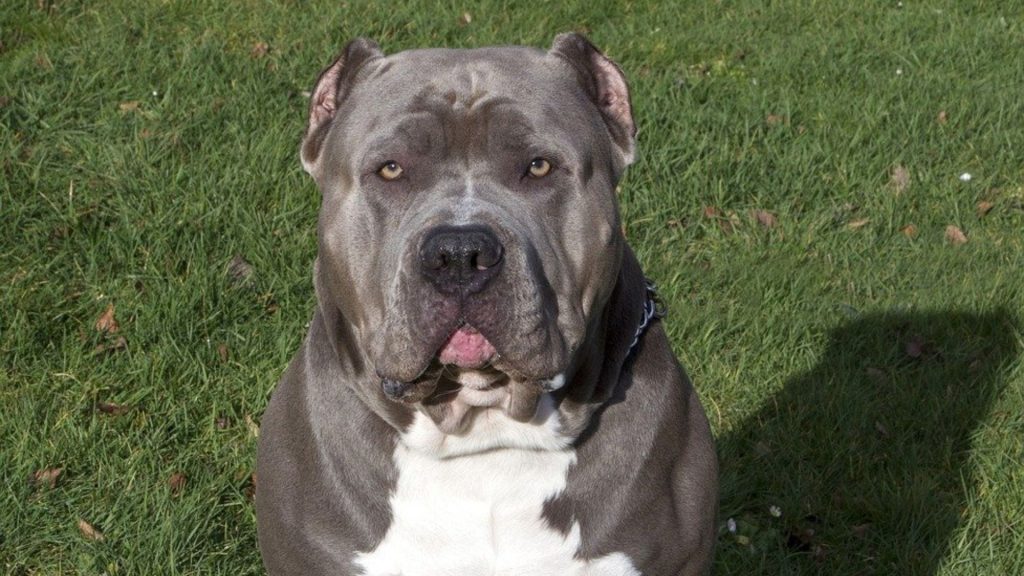
The American Pit Bull Terrier originated in the United States in the early 19th century. Bred from Old English Bulldogs and Terriers, they were initially used for bull-baiting and later as farm dogs and family companions. Despite their controversial history, American Pit Bull Terriers have become known for their loyalty and versatility.
Physical Characteristics
American Pit Bull Terriers are medium-sized dogs, typically weighing between 30 to 60 pounds and standing about 17 to 21 inches tall at the shoulder. They have a muscular, athletic build with a short, smooth coat that comes in various colors and patterns. Their broad head, strong jaw, and expressive eyes give them a distinctive and powerful appearance.
Temperament and Protective Instincts
American Pit Bull Terriers are known for their affectionate, energetic, and loyal nature. They form strong bonds with their families and are especially good with children. While they can be protective, they are also known for their friendly disposition towards humans. Proper socialization is crucial to ensure they are well-adjusted and balanced.
Training Tips and Suitability for Families
Training an American Pit Bull Terrier requires consistency, patience, and positive reinforcement. Early socialization and obedience training are essential to harness their energy and intelligence. These dogs need regular exercise and mental stimulation to stay happy and healthy. They thrive in active households where they can participate in various activities and enjoy close family interactions. With proper training and care, American Pit Bull Terriers make excellent family pets and loyal protectors, well-suited for families who can provide the time and commitment they need.
Training and Socialization for Guard Dogs
Early training and socialization are critical for guard dogs. Puppies are highly impressionable, and their early experiences shape their behavior for life. Socializing a young guard dog involves exposing them to various people, environments, and situations. This helps them develop confidence and prevents fear-based aggression. Early training establishes a foundation of obedience and ensures the dog understands basic commands. A well-socialized and trained guard dog can differentiate between normal and threatening situations, making them more effective protectors.
Key Training Techniques for Effective Guarding
Training a guard dog requires consistency, patience, and positive reinforcement. Start with basic obedience commands such as sit, stay, and come. These commands form the groundwork for more advanced training. Positive reinforcement, such as treats and praise, encourages desired behaviors. Gradually introduce guarding exercises, like boundary training, where the dog learns to patrol and protect a designated area. Teach them to bark on command to alert owners of potential intruders. Controlled socialization with strangers can help the dog understand when to be protective and when to be friendly. Using professional trainers can be beneficial, especially for breeds with strong guarding instincts.
Balancing Protection with Obedience and Friendliness
Balancing protection with obedience and friendliness is essential for a well-rounded guard dog. A guard dog must be able to follow commands promptly while remaining approachable to friends and family. Reinforce positive behavior when the dog shows restraint and calmness around visitors. Avoid training methods that encourage excessive aggression, as this can lead to uncontrollable behavior. Regularly practice obedience drills to keep the dog sharp and responsive. Incorporating playtime and affection ensures the dog remains happy and well-adjusted. A guard dog that is both protective and obedient is a valuable asset, providing security while being a loyal and loving family member.
Proper training and socialization create a balanced, effective guard dog that can protect and integrate seamlessly into family life.
Living with a Guard Dog
Living with a guard dog requires commitment to their daily care and exercise needs. These dogs need regular physical activity to stay healthy and happy. Daily walks, playtime, and mental stimulation are essential. High-energy breeds may benefit from structured activities like agility training or obedience classes. A balanced diet and regular veterinary check-ups are also crucial to maintain their health.
Potential Challenges and Solutions
Guard dogs can present unique challenges. Their protective nature might lead to over-guarding or aggression if not properly managed. Early training and socialization can mitigate these issues. Consistent routines and clear boundaries help maintain control. For dogs with high energy levels, providing adequate exercise can prevent destructive behaviors. Engaging toys and puzzle feeders can keep them mentally stimulated. Professional training assistance can address specific behavioral challenges and ensure the dog’s protective instincts are appropriately channeled.
Ensuring the Safety of Family and Visitors
Ensuring the safety of family and visitors is paramount. Introduce the dog to new people gradually and in a controlled manner. Use commands like “sit” and “stay” to manage their behavior around guests. Teach children how to interact with the dog respectfully and supervise their interactions. Clear signals and commands help the dog understand when to be protective and when to be friendly. Installing secure fencing and gates can prevent the dog from roaming and encountering unfamiliar individuals. Regular training refreshers keep the dog’s behavior in check, ensuring a safe environment for everyone.
Living with a guard dog involves fulfilling their care needs, managing potential challenges, and maintaining a safe home for all. Proper training and socialization are key to integrating a guard dog into family life successfully.
Conclusion
In this article, we’ve explored the top seven big, scary dog breeds: Rottweiler, German Shepherd, Bullmastiff, Doberman Pinscher, Cane Corso, Great Dane, and American Pit Bull Terrier. Each breed offers unique traits and protective instincts. When choosing the right guard dog, consider your lifestyle, experience, and commitment level.
A well-trained and socialized guard dog can be a loyal protector and beloved family member. Ensure you have the time and resources to meet their needs. With proper care and training, these breeds can provide both security and companionship.

Hello, I’m Donna Carter, the founder and writer behind PetFleck.com. My journey with dogs started years ago, and it’s been a passion that has only grown stronger over time. I’ve always been fascinated by the unique behaviors and characteristics of different dog breeds, and this curiosity has led me to dive deep into the world of canine studies.
My love for dogs is the driving force behind everything I do. I’ve dedicated countless hours to researching and understanding the nuances of dog care, training, and breed-specific traits. This dedication helps me create content that is not only informative but also genuinely helpful for fellow dog lovers and owners.
At PetFleck, I combine my extensive knowledge and hands-on experience with my passion for dogs to provide valuable insights and tips. Whether it’s exploring different breeds or offering practical advice on dog care, I aim to share knowledge that makes a real difference in the lives of dogs and their families.
I’m thrilled to share my love for dogs with you through my writing. I hope my articles inspire and inform, helping you to better understand and appreciate the incredible bond we share with our furry friends.
Thank you for visiting PetFleck.com, and I look forward to connecting with you through our shared love of dogs!

